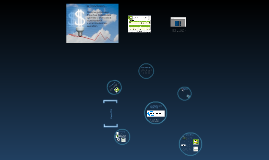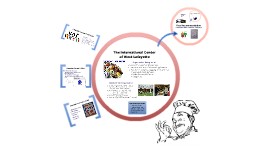Recommendation Presentation
Transcript: Hands-free is not better than hand-held device as it's not the physical distraction, it's the distraction of conversation 4x as likely to get in car accident Detected stimuli but reactions were suppressed Inattention blindness - divert attention from environment to internal cell phone conversation Resources and studies Lamble, Dave, Tatu Kauranen, Matti Laakso, and Heikki Summala. “Cognitive Load and Detection Thresholds in Car Following Situations: Safety Implications for Using Mobile (cellular) Telephones While Driving.” Accident Analysis & Prevention 31, no. 6 (November 1999): 617–623. doi:10.1016/S0001-4575(99)00018-4. Strayer et al., 2003 Backer-Grondahl et al., 2011 Lee et al., 2007 Hosking, Young, & Regan et al., 2009 McEvoy, Suzanne P., Mark R. Stevenson, Anne T. McCartt, Mark Woodward, Claire Haworth, Peter Palamara, and Rina Cercarelli. “Role of Mobile Phones in Motor Vehicle Crashes Resulting in Hospital Attendance: a Case-crossover Study.” BMJ 331, no. 7514 (2005): 428. doi:10.1136/bmj.38537.397512.55. Strayer, D. L., & Drews, F. A. (2007). Cell-Phone–Induced Driver Distraction. Current Directions in Psychological Science, 16(3), 128–131. doi:10.1111/j.1467-8721.2007.00489.x Lamble et al., 1999 McEvoy et al., 2005 Strayer, David & Drews, Frank. (2003) Cell phone-induced failures of visual attention during simulated driving. Journal of Experimental Psychology, 9(1), 23-32. doi: 10.1037/1076-898X.9.1.23 Consiglio, W., Driscoll, P., Witte, M., & Berg, W. P. (2003). Effect of cellular telephone conversations and other potential interference on reaction time in a braking response. Accident Analysis and Prevention, 35(4), 494-500. doi: http://dx.doi.org/10.1016/S0001-4575(02)00027-1 Strayer, D. L., & Johnston, W. A. (2001). Driven to Distraction: Dual-Task Studies of Simulated Driving and Conversing on a Cellular Telephone. Psychological Science, 12(6), 462–466. doi:10.1111/1467-9280.00386 Evolution in communication technology affects young drivers more than others. Lack more spare attentional capacity and lower abilities to anticipate and manage driving hazards. Looked at driving record of crashes and driving simulations of these participants Using driving simulators, teen driver's watched the road 400% less when texting In addition, variability in lane position increased 50% and missed lane changes increased 140% Are hands-free devices in cars safer than hand-held cellular devices? conducted experiment by studying hands free, hand held, passenger, radio listening to music did not cause slow reaction time for braking hand held and hands free did another experiment studied hands free calling by looking at it approaching corners and stationary cars bad for safety and also for car driver’s sensitive to upcoming events perception and awareness is significantly degraded when simultaneously using a hands-free mobile phone Treffner, P. J., & Barrett, R. (2004). Hands-free mobile phone speech while driving degrades coordination and control.Transportation Research Part F: Traffic Psychology and Behaviour, 7(4-5), 229-246. doi: http://dx.doi.org/10.1016/j.trf.2004.09.002 Robin Yang, Abigail Waite, Charlotte Wonnell, Pie Wichmann, Bett Zamparelli Strayer et al., 2001, 2007 conducted experiment with joystick and rememberance of words missed twice as many traffic signals when talking on phone talking on phone is different and more dangerous than talking to a friend or listening to a radio continuously avert attention to conversation more than to actual driving environment hands free is same as hands held as visual stimuli is what is difficult to interpret for drivers who talk on the phone Consiglio et al, 2003 Treffner et al, 2004 Is installing hands-free devices in cars safer than hand-held cellular device? Recommendation Is installing hands-free devices in cars safer than hand-held cellular device? Divided visual attention and divided non-visual attention Simulated hand-held device by typing into keyboard, compared to cognitive tasks (hands-free) while driving Braking times impaired with use of hand-held and hands-free Drivers who used phone 10 min before crash were 400 % more likely to crash The use of available hands-free devices does not reduce risk Both are associated with increased likelihood of a crash Backer-Grondahl, Agathe & Sagberg, Fridulv. (2011) Driving and telephoning: Relative accident risk when using hand-held and hands-free mobile phones. Safety Science, 49(2), 324-330. http://dx.doi.org.ezproxy.uvm.edu/10.1016/j.ssci.2010.09.009 We recommend that Sanshand Motor Company does not add hands free calling options to their vehicles since there are no benefits favoring the driver's safety.

















